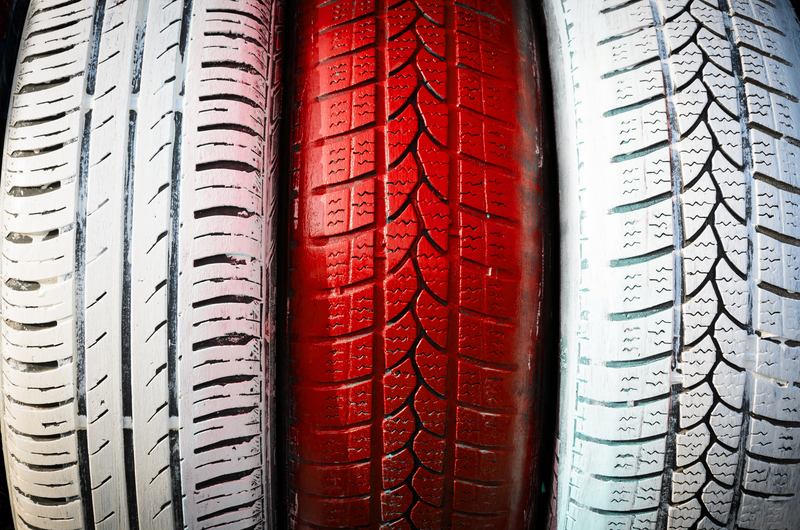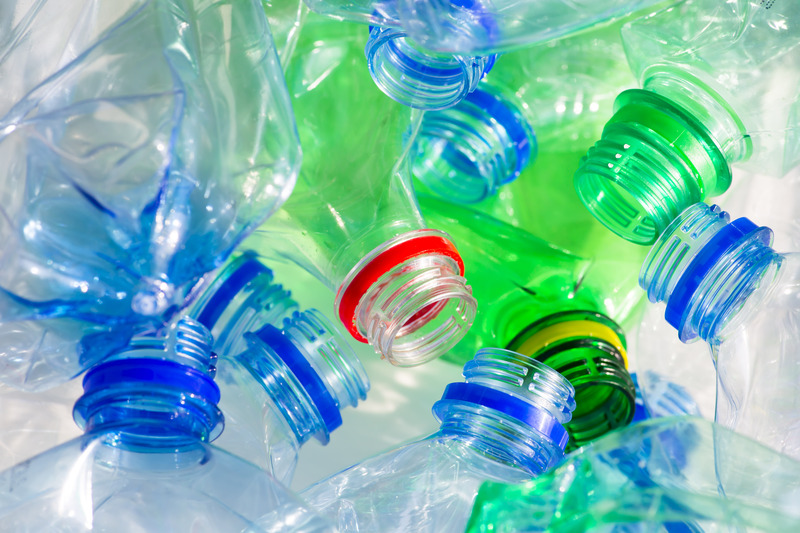Making the Most of Metal Recycling With Used Pots and Pans
Metal recycling is a powerful step toward a greener, cleaner, and more sustainable world. One of the simplest starting points for households is recycling used pots and pans. These common kitchen utensils often get discarded when they are old or no longer match your culinary needs. However, with a little knowledge and the right avenues, you can ensure those unwanted pots and pans find new life. In this comprehensive article, you'll discover everything you need to know about recycling metal cookware, from environmental benefits to step-by-step guidance and smart reuse ideas.

The Environmental Importance of Metal Recycling
Why focus on recycling metal? Metals are finite resources extracted through energy-intensive mining operations. When you recycle used pots and pans, you keep valuable metals like aluminum and stainless steel in circulation, reducing demands on mining, conserving energy, and minimizing landfill waste. The key benefits of metal recycling include:
- Energy efficiency: Recycling metals uses far less energy than producing new ones from ore.
- Resource conservation: Limits the need for mining new materials, protecting natural habitats and biodiversity.
- Waste reduction: Diverts heavy, bulky metal cookware from ever-growing landfills.
- Climate protection: Cuts greenhouse gas emissions from mining, refining, and waste management.
Every pot or pan recycled is a step toward a more sustainable future.
What Types of Pots and Pans Can You Recycle?
Not all metal cookware is created equal. Identifying what you've got is the foundation for successful, eco-friendly recycling. Here's a guide to the most common types:
- Aluminum cookware: Lightweight and often nonstick, aluminum pots and pans are highly valuable to recyclers.
- Stainless steel cookware: Durable and rust-resistant, this is another excellent material for recycling.
- Copper pots and pans: Sometimes more difficult to recycle due to coatings or mixed materials, but worth it for the high metal value.
- Cast iron pans: Heavier and less commonly recycled curbside, but accepted by many scrap metal yards.
Most local recycling programs accept metal cookware as long as they're made primarily of a single type of metal. If your pots or pans have plastic handles, glass lids, or nonstick coatings, you may need to prepare them first--more on that below.
Can Non-Stick Cookware Be Recycled?
Many households use nonstick pans for easy cooking and cleaning. However, these pans have a coating, most famously Teflon, that requires special consideration. Standard recycling programs typically do not accept nonstick pans due to the difficulty of separating the coating from the metal. If you have nonstick cookware that's reached the end of its life, contact your local recycling authorities or search for specialized recycling centers.
How to Prepare Used Pots and Pans for Recycling
Before heading to the recycling center or curb, it's important to prepare your used pots and pans properly. Follow these steps for the best chance of successful recycling:
- Clean Residue: Remove any food residue and thoroughly wash cookware. Greasy, dirty metals may be rejected by recyclers.
- Remove Non-Metal Parts: Detach plastic handles, rubber grips, or glass lids. Keep only the pure metal portion.
- Check for Coatings: If your cookware contains nonstick, enamel, or other coatings, contact your recycling facility to clarify whether they accept such items.
- Group by Material: If possible, separate aluminum, stainless steel, copper, or cast iron cookware. Different metals often need separate processing.
By following these steps, you increase the likelihood that your old pots and pans are efficiently recycled and truly contribute to sustainability.
Where to Recycle Used Pots and Pans
Now you're ready to recycle! But where exactly do you go? Here are some top options for recycling old cookware:
Municipal Recycling Programs
Many cities offer curbside metal recycling. However, check local guidelines--some programs only take small metal items, while others accept large or bulky cookware. Always confirm before placing your pots and pans in the bin.
Specialized Metal Recycling Centers
Scrap metal dealers or private recycling facilities usually accept a wide range of metals, including cookware. Contact your local scrap yard to confirm which items are allowed and if you need to prepare the items in any special way.
Retailer Take-Back Programs
Some kitchenware stores and homeware retailers offer recycling or trade-in programs for old cookware, especially during new product promotions. Ask your local retailers for possible incentives or collection days.
Donation and Charitable Organizations
If your pots and pans are still usable, consider donating them to thrift stores, shelters, or community kitchens. Giving cookware a second life reduces waste and supports those in need.
Creative Reuse: Repurposing Old Metal Pots and Pans
While recycling used cookware is effective, don't forget the creativity of repurposing old pots and pans. Here are some imaginative, eco-friendly ideas:
- Garden planters: Pots make quirky, sturdy outdoor planters for flowers or herbs.
- Wall art: Arrange old frying pans and lids for unique kitchen or yard art.
- Storage bins: Use deep pots for organizing tools, toys, or supplies in the garage.
- Birdbaths: Large lids or shallow pans can transform into functional birdbaths or feeders.
- Clock faces: Attach clock hands to a decorative pan for a rustic wall timepiece.
These options not only keep metal out of landfills but add character and usefulness to your surroundings.
Frequently Asked Questions About Metal Recycling for Cookware
Are Metal Pots and Pans Curbside Recyclable?
Many curbside programs accept small metal items, but large or bulky cookware may be restricted. Always check local rules. If in doubt, opt for scrap metal recyclers.
Do You Need to Remove Handles Before Recycling?
Yes, it's best to remove non-metal components such as plastic or wooden handles. This helps recyclers process metal more efficiently. Some facilities will accept items as-is, but pre-removal is typically encouraged.
What If My Cookware Has Rust?
Light rust generally doesn't impact metal recycling, since metals are melted down. However, extremely dirty or heavily rusted cookware should be cleaned beforehand.
How Much Are Metal Pots and Pans Worth at a Scrap Yard?
Value depends on the metal type. Aluminum and copper are more valuable than stainless steel or cast iron. Scrap yards pay by the pound, but expect only a modest return--recycling is more about environmental responsibility than profit.
Are Nonstick Pans Bad for the Environment?
Nonstick coatings aren't typically recyclable and may release toxins when incinerated. Whenever possible, opt for donation, specialized recycling, or repurposing before disposal. Choose eco-friendly pan alternatives next time!
Tips for Reducing Kitchen Waste Beyond Recycling
While metal recycling is essential, it's only one part of a sustainable lifestyle. Consider these additional tips to reduce kitchen waste:
- Buy quality cookware: Investing in durable pans (like stainless steel or cast iron) means fewer replacements and less waste.
- Maintain and repair: Regular cleaning and minor fixes (like tightening loose handles) extend your pans' lifespan.
- Share or donate: If a pan is still usable, let someone else benefit before discarding it.
- Choose recyclable materials: Avoid composite pans made with mixed, inseparable materials.
The Life Cycle of Recycled Metal Pots and Pans
Curious what happens after you drop off that old skillet? Here's how metal recycling for used cookware typically works:
- Collection: Your pots and pans are gathered by recycling trucks, scrap yards, or retailers.
- Sorting and Preparation: Metals are separated by type and prepared for processing. Non-metal attachments or coatings are removed.
- Shredding: The cookware is broken down into smaller pieces for ease of melting.
- Melting and Purification: Metal fragments are melted in large furnaces, purified, and any impurities are removed.
- Forming and Manufacturing: The molten metal is cast into new shapes, such as bars, sheets, or components for fresh products--including new pots and pans!
This impressive cycle can repeat indefinitely: metals like aluminum and stainless steel don't degrade through recycling, so your old frying pan could eventually become a bike frame, car part, or next-generation kitchen essential.

Metal Recycling for Pots and Pans: The Global Perspective
With billions of people cooking each day, the potential for reducing metal waste is huge. Some countries lead the way in kitchenware recycling, while others are just beginning to recognize its value. Globally:
- Recycling rates for metals like aluminum can exceed 60%, but there's plenty of room for improvement in household items like cookware.
- Urban mining--recovering metals from obsolete products--is gaining traction in many cities.
- Eco-conscious consumers are demanding more sustainable goods and closed-loop manufacturing systems.
With increased awareness and better recycling programs, communities can ensure that old pots and pans aren't just garbage--but valuable resources for tomorrow.
Conclusion: Small Steps, Big Impact
Recycling used pots and pans is a simple yet powerful way to conserve resources, lower energy use, and reduce waste. Whether you drop your old cookware at a metal recycling center, donate it to a local charity, or give it new life as a planter or storage bin, every action helps build a cleaner, smarter world.
Don't let your unwanted cookware collect dust or head to the landfill. Embrace the potential of metal recycling with your used pots and pans--and inspire others to do the same.
Take Action Today
- Inspect your kitchen for old, unused pots and pans.
- Prepare them for recycling or donation after checking your local guidelines.
- Share this article to spread awareness about responsible metal recycling!
Together, we can make a difference--one recycled pot and pan at a time.